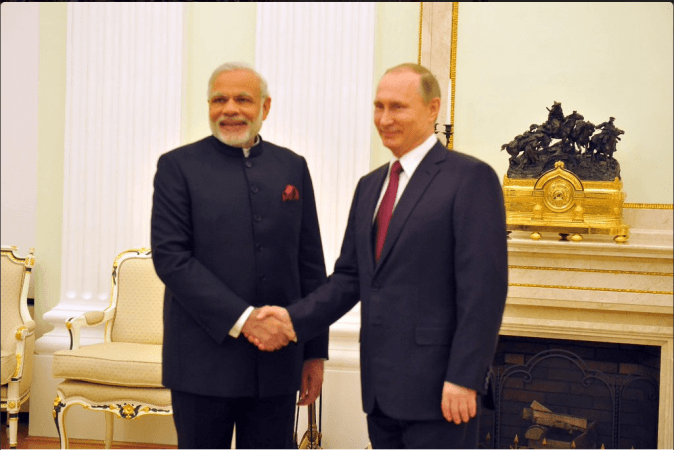
At the height of the Indo-Pakistani War of 1971, the then United States President Richard Nixon tried his best to undermine India and support Pakistan's point of view. It was Russia (then as Soviet Union) that stood rock solid in India's support in the need of the hour.
India had signed a 20-year cooperation treaty with Soviet Union a few months earlier. It reportedly had a secret clause of Soviet Union intervening in India's favour, if attacked.
The US introduced a resolution in United Nations Security Council (UNSC), which called in for a ceasefire and withdrawal of troops from both sides, a move detrimental to India's interest. The resolution was supported by 104 countries and only 10 countries stood in India's favour. But Soviet Union vetoed it.
Pakistan pressed for an UN peacekeeping force for the India-East Pakistan border, but the resolution was blocked by Soviet Union under the leadership of then President Leonid Brezhnev.
When the US deployed a 10-ship strong Task Force 74 into the Bay of Bengal, it was stopped from taking any action against India, thanks the two groups of cruisers and destroyers (with nuclear missiles) and a nuclear submarine from Vladivostok, which was trailing the US Task Force.
Further, due to Moscow's involvement, China was kept at bay. This allowed the Indian forces who were under the guidance and leadership of Field Marshal Sam Manekshaw to undertake the operations in Bangladesh (then East Pakistan).
In any war, international support can be a huge multiplier. But fast forward to the present, India has buried its enmity with US. It is also the second-largest supplier of military hardware to India.
India does not require Russian help to deal with UNSC resolutions as the world has come to respect it for its economic might and non-interference in wars, apart from the ones that were trusted on her.
But Indian and Russian friendship has not diminished. The two countries share a strategic partnership. Russia is still a reliable friend for India, though the latter's cooperation with US is growing.
If India goes to war, it will be the weapons of Russian-origin that India will deploy first, be it INS Vikramaditya with its 26 MiG-29K multirole fighters and 10 Kamov early warning and antisubmarine helicopters; Sukhoi Su-30 frontline air dominance fighters; BrahMos supersonic cruise missiles with 290km range; Il-78 aerial refuelling tankers; Klub missiles fired from Indian Navy ships; INS Chakra, the nuclear powered submarine; Talwar-class stealth frigates, T-90 main battle tanks and infantry support vehicles.
"We value Russian support during the era when not many doors were open to us," Prime Minister Narendra Modi was quoted as saying by TASS, a Russian news agency.
"Even in the current environment, and despite India's improved access to the world market, Russia remains our principal partner," he added.
Meanwhile, PM Modi and Russian President Vladimir Putin are expected to meet at the India-Russia Annual Summit to be held in Goa on October 15.
(Inputs from Russia and India Report)








